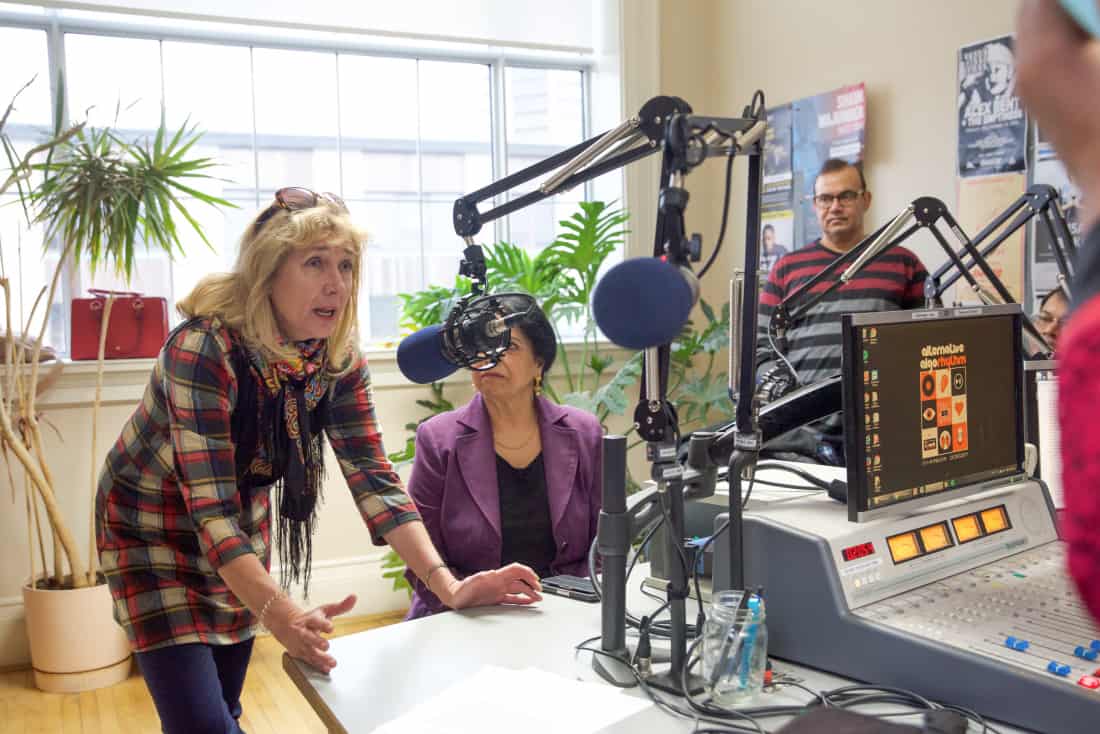
Although artists of colour in the city come from different backgrounds, they face the same issues in practicing their craft.
On Nov. 24, the segment “Banglar Gaan O Kotha” at the CFCR 90.5FM Community Radio hosted a conversation between artists of colour on the topic of how they have been underrepresented and tokenized in Canada. The focus of the talk show was how to move forward towards a positive solution.
Jebunnessa Chapola, host of “Banglar Gaan O Kotha” and a Bangladeshi singer herself, organized the talk to shine a light on what she considers to be an under-explored issue in Saskatoon.
“As an insider of the South Asian community, I have observed that these artists are facing tremendous daily challenges to keep continuing their artistic growth here in our loving city, Saskatoon,” Chapola said. “Ethnic artists do not have a positive climate to cultivate more artists in their families and community for multiple reasons.”
Some of these reasons are financial. Chapola shares her concerns that artists of colour get a smaller audience and have to work other jobs in order to support themselves and their families.
“In India, classical music and dance or singing takes hours and hours of practice. It’s a very tough form of art and many artists are busy with their survival jobs,” Chapola said. “Some are doing two or three jobs, so at the end of the day they do not get the motivation or energy to go back to their musical life.”
Nayar Javed, a local social justice activist, says that even when they do get opportunities to practice their art, there are still problems to face, including a lack of understanding of other cultures by the general public.
“Multiculturalism has opened some spaces for us… At the same time those spaces are totally marginalized,” Javed said. “Instead of us passing on some intercultural understanding and enriching Canadian society and Canadian culture, we are usually treated as entertainers, which is a typical view of colonized subjects; to provide entertainment but they do not learn anything from us.”
Manuela Valle-Castro, a University of Saskatchewan sessional lecturer and a musician and activist from Chile, says that even though Canada is known as a multicultural country, it is not as accepting of diversity as it seems.
“People don’t understand that Canada’s immigration policies are very oriented towards assimilation and are economically motivated,” Valle-Castro said. “It’s a policy where we are expected to assimilate as nice, conformist, grateful immigrants. And we are supposed to leave everything that made us who we are behind and become good workers.”
The University of Saskatchewan also lacks in resources for artists, says Paromita Sengupta, a fourth-year Bangladeshi student in computer science and one of the many racialized students who find themselves struggling to maintain their culture and art alive while having a full workload.
For what can be done at the university to help the artists of colour, Sengupta asks for more opportunities to practice, a space to rehearse and understanding from others when they invite artists to perform at their events.
“We are not here to entertain people. We are here to bring out our own roots and heritage and showcase this. But they don’t understand that — that’s the challenge we have to face,” Sengupta said. “The university values good students but it doesn’t value good artists. I feel like we should be given a chance to practice our cultural artforms.”
Valle-Castro ended the broadcast with a call for listeners to join the Saskatoon Anti-Racism Network to support each other and use their influence to put pressure and begin a lobby on the issue. While the artists got together on “Banglar Gaan O Kotha” to find a solution, the conversation has just begun.
—
Nathalie Baquerizo
Photo: Victoria Becker/ Photo Editor